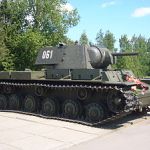В путь - V Put “Let’s go” written in 1954 by Vasily Solovyov-Sedoi and Mikhail Dudin
Operation Barbarossa and The Catastrophes of 1941.
There are several points to be made about the Red Army and its early performance in World War II.
The Red Army’s failures in 1941 often make reference to Stalin’s purges of the officer corps in the late 1930’s. Indications are that the Purge, at least among Army officers, was neither so extensive or as severe as has been asserted - as many were simply expelled from the Communist Party, but retained their rank and/or command.
The Initial Stages of Operation Barbarosa
The disposition of Soviet forces is argued by some to reflect that Stalin had the intention of striking against Germany as early as July of 1941. Soviet operational readiness, however, presents a different picture insomuch as many units lacked spare parts for vehicles, fuel, ammunition, and most units were below their authorized strength.
Those interested in wargaming might take a look at The Operational Art of War III which offers numerous scenarios for World War II’s Eastern Front - and Gary Grigsby’s War in the East which goes into even greater detail.
 The Red Army had over 25,000 tanks (by various descriptions) at the outset of the war - ranging from various “tankettes” to the mass produced T-26, BT-2/5/7 series, experimental T-28 and T-35’s, and the new generation of T-34 mediums and KV-1/2 heavy tanks. In contrast, Germany and its allies could muster fewer than 3,500 tanks.
The Red Army had over 25,000 tanks (by various descriptions) at the outset of the war - ranging from various “tankettes” to the mass produced T-26, BT-2/5/7 series, experimental T-28 and T-35’s, and the new generation of T-34 mediums and KV-1/2 heavy tanks. In contrast, Germany and its allies could muster fewer than 3,500 tanks.
By the end of 1941, almost all of Russia’s original tanks were lost, the result of lack of radios, and generally poor training, leadership, logistics, tactics along with inexperience and deficiencies in unit structure and organization. These issues were never fully resolved but did improve gradually. I would argue that probably the #1 greatest contribution to the Soviet war effort was realized as more and more radios became available from 1942 onward - followed only by Russia moving aggressively into a “Total War Effort” and Lend Lease Trucks.
The Battle of Oman and First Battle of Kiev - together known as the Kiev Defensive Operation. These battles ran concurrently and on the heels of the Soviet defeat at Minsk where over 600,000 Soviet soldiers were lost.
“Quantity has a quality all of its own,” variously credited to Mao, Lenin, Trotsky and Stalin would bear itself out time and time again. The Soviet Union’s capacity to repeatedly absorb “epic losses” made it clear even by the end of 1941 that the whole “War in the East” would play out very differently than the early victories in Western and Southern Europe.
An Overview of the Kiev Defensive Operation:
| Forces: | USSR | Axis Forces |
| Commanders: | Marshal Budyonny | Fieldmarshall von Rundstedt |
| Units: | Southwestern Front:Uman
Kiev:
|
Army Group South:
|
| Casualties: | Uman:
Kiev:
|
Uman:
Kiev:
|
Casualty ratios are often glossed over - but they are so striking as to deserve reflection even today.
| Country | Military Deaths | Size of Military | % Killed |
| Belgium | 12,100 | 650,000 | 2% |
| France | 200,000 | 5,000,000 | 4% |
| Netherlands | 17,000 | 400,000 | 4% |
| Soviet Union | 8,668,400 | 34,477,000 | 25% |
That sort of puts things into a very interesting perspective - and should generate quite a few questions. For however ill-prepared the Red Army was to face the Axis forces, so also was “the West” - unless we want to scratch deeper than the skin allows.
Who would like to go deeper into Western Europe’s performance against Germany in World War II? Let’s put that to a vote in the comments below.
Honoring the military sometimes means exposing the politicians - and having spent more than a little time wondering why and digging into these matters, the history we are told is not the history that was. It’s hard to tell who cares anymore - but it puts a slant on why things are the way they are today, the consequence of epic stupidity and incompetence or something worse?
Additional Resources:
- RKKA in WW2 Project - A great collection of Operational Maps, TO&E’s, Orders of Battle, Picture Galleries and more. (English)
- “Память” (Memory) - The NUMBER ONE site for Red Army Unit Histories - covering the vast majority of brigade to front level units (Russian), many in very considerable detail including unit commanders.